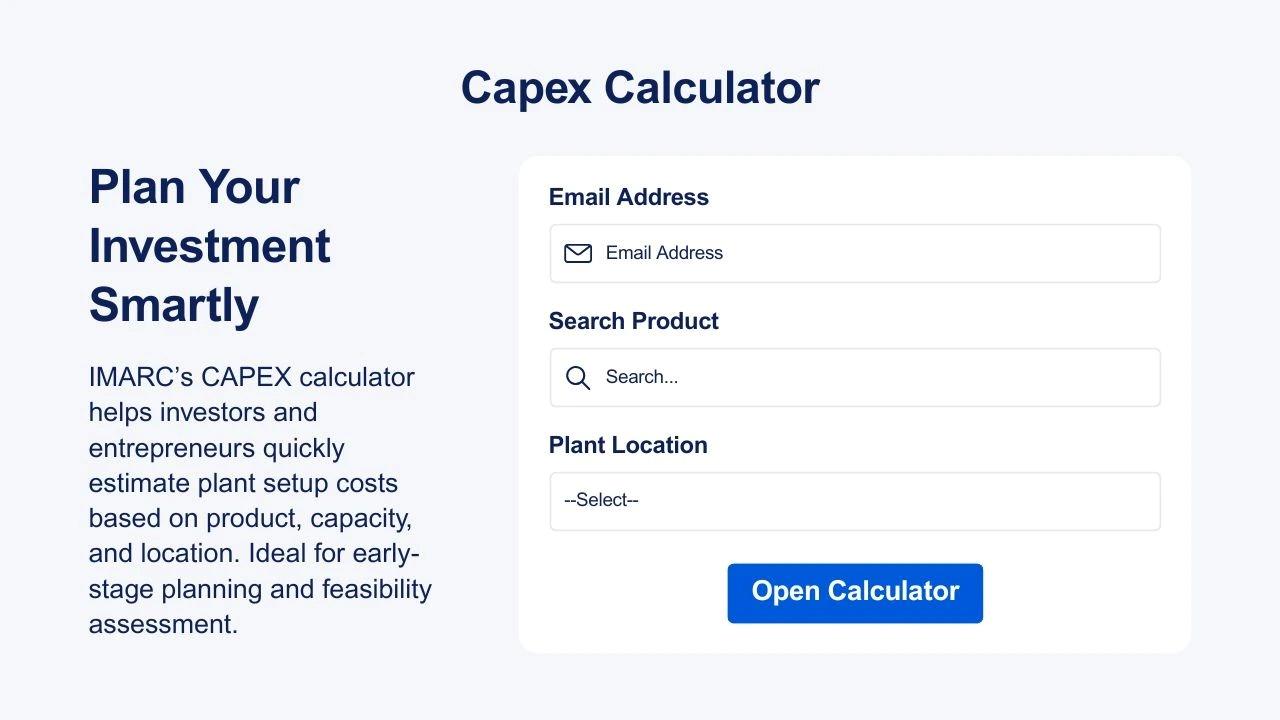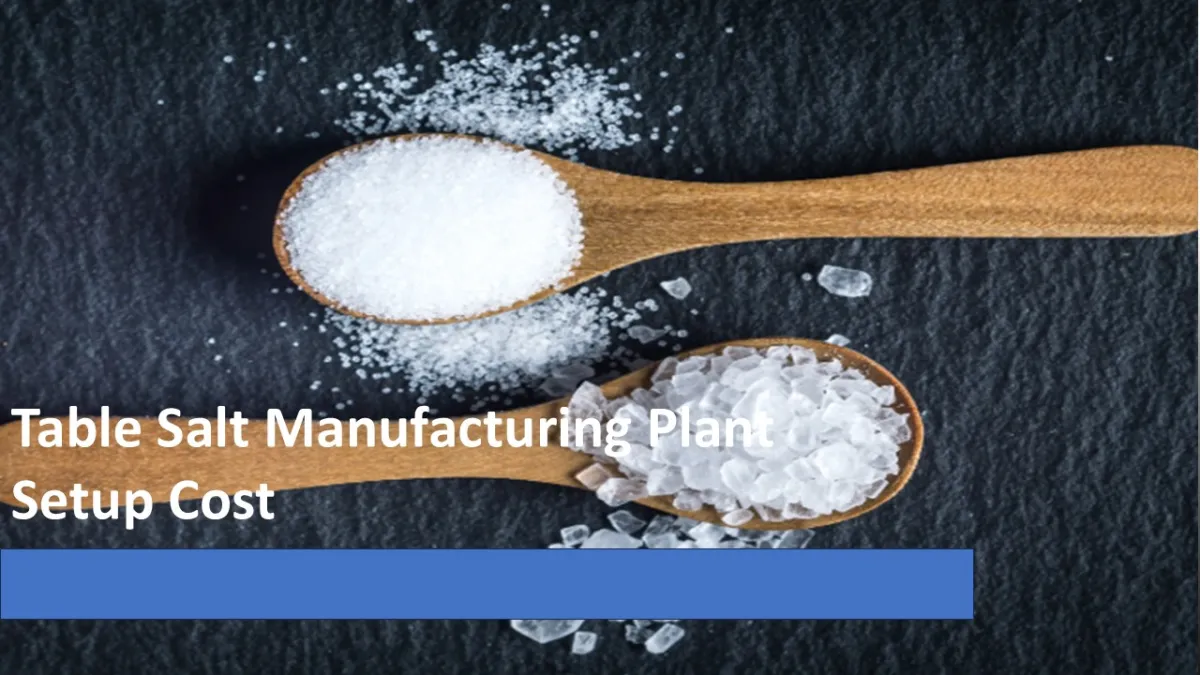
Table Salt Manufacturing Plant Setup 2025: Business Plan And Machinery Cost Analysis
IMARC Group's report titled“ Table Salt Manufacturing Plant Setup Cost 2025: Industry Trends, Plant Setup, Machinery, Raw Materials, Investment Opportunities, Cost and Revenue ” offers a comprehensive guide for establishing a table salt manufacturing plant, covering everything from product overview and production processes to detailed financial insights.
Request for a Sample Report: https://www.imarcgroup.com/table-salt-manufacturing-plant-project-report/requestsample
A table salt manufacturing plant is a facility dedicated to the production of refined sodium chloride, commonly known as table salt, for human consumption and industrial applications. The production process typically begins with the extraction of raw salt from natural sources such as underground rock salt deposits or seawater. Depending on the source, salt is obtained either through mining or evaporation methods. Once harvested, the raw salt undergoes washing, purification, and drying processes to remove impurities, minerals, and moisture. Additional refining steps may include iodine fortification and anti-caking treatments to improve shelf life and prevent clumping. Modern plants employ advanced machinery for crushing, grinding, grading, and packaging to ensure consistent quality and compliance with food safety regulations. Facilities often incorporate automated systems for production monitoring, quality control, and energy efficiency. The final product is packaged in various forms, such as fine powder or granulated crystals, for retail, food processing, or chemical industry use. Stringent quality standards are maintained to meet national and international specifications, ensuring that the salt is safe for consumption and meets market demands.
The table salt manufacturing plant market is primarily driven by the consistent global demand for sodium chloride in both culinary and industrial sectors. Population growth, urbanization, and increasing packaged food consumption significantly contribute to rising salt usage in households and food processing industries. Health and nutrition trends, particularly the emphasis on iodine-fortified salt to prevent iodine deficiency disorders, further boost market demand. Industrial applications, including chemical manufacturing, water treatment, textile processing, and de-icing, also play a substantial role in market growth. Technological advancements in production, such as energy-efficient evaporation systems, automated packaging lines, and improved purification techniques, enhance output quality and reduce operational costs, making manufacturing more competitive. Additionally, government regulations promoting food fortification programs and ensuring compliance with safety standards encourage expansion and modernization of manufacturing plants. The growing export potential, supported by increasing international trade in refined salt, further strengthens market prospects. Rising awareness about premium and specialty salts, such as low-sodium or mineral-enriched varieties, creates opportunities for product diversification, enabling manufacturers to tap into niche segments and expand market reach. Overall, the industry benefits from a stable and diverse demand base, driving steady growth in manufacturing capacity worldwide.
Request For Customization: https://www.imarcgroup.com/request?type=report&id=9100&flag=E
Key Steps Required to Set Up a Table Salt Plant
1. Market Analysis
The report provides insights into the landscape of the table salt industry at the global level. The report also provides a segment-wise and region-wise breakup of the global table salt industry. Additionally, it also provides the price analysis of feedstocks used in the manufacturing of table salt, along with the industry profit margins.
. Segment Breakdown
. Regional Insights
. Pricing Analysis and Trends
. Market Forecast
2. Product Manufacturing: Detailed Process Flow
Detailed information related to the process flow and various unit operations involved in the table salt manufacturing plant project is elaborated in the report. These include:
. Land, Location, and Site Development
. Plant Layout
. Plant Machinery
. Raw Material Procurement
. Packaging and Storage
. Transportation
. Quality Inspection
. Utilities
. Human Resource Requirements and Wages
. Marketing and Distribution
3. Project Requirements and Cost
The report provides a detailed location analysis covering insights into the plant location, selection criteria, location significance, environmental impact, and expenditure for table salt manufacturing plant setup. Additionally, the report also provides information related to plant layout and factors influencing the same. Furthermore, other requirements and expenditures related to machinery, raw materials, packaging, transportation, utilities, and human resources have also been covered in the report.
Machinery and Equipment
. List of machinery needed for table salt production
. Estimated costs and suppliers
Raw Material Costs
. Types of materials required and sourcing strategies
Utilities and Overheads
. Electricity, water, labor, and other operational expenses
4. Project Economics
A detailed analysis of the project economics for setting up a table salt manufacturing plant is illustrated in the report. This includes the analysis and detailed understanding of capital expenditure (CAPEX), operating expenditure (OPEX), income projections, taxation, depreciation, liquidity analysis, profitability analysis, payback period, NPV, uncertainty analysis, and sensitivity analysis.

Capital Expenditure (CAPEX)
. Initial setup costs: land, machinery, and infrastructure
Operating Expenditure (OPEX)
. Recurring costs: raw materials, labor, maintenance
Revenue Projections
. Expected income based on production capacity, target market, and market demand
Taxation
Depreciation
Financial Analysis
. Liquidity Analysis
. Profitability Analysis
. Payback Period
. Net Present Value (NPV)
. Internal Rate of Return
. Profit and Loss Account
Uncertainty Analysis
Sensitivity Analysis
Economic Analysis
5. Legal and Regulatory Compliance
. Licenses and Permits
. Regulatory Procedures and Approval
. Certification Requirement
6. Hiring and Training
. Total human resource requirement
. Salary cost analysis
. Employee policies overview
The report also covers critical insights into key success and risk factors, which highlight the aspects that influence the success and potential challenges in the industry. Additionally, the report includes strategic recommendations, offering actionable advice to enhance operational efficiency, profitability, and market competitiveness. A comprehensive case study of a successful venture is also provided, showcasing best practices and real-world examples from an established business, which can serve as a valuable reference for new entrants in the market.
About Us:
IMARC is a global market research company offering comprehensive services to support businesses at every stage of growth, including market entry, competitive intelligence, procurement research, regulatory approvals, factory setup, company incorporation, and recruitment. Specializing in factory setup solutions, we provide detailed financial cost modelling to assess the feasibility and financial viability of establishing new manufacturing plants globally. Our models cover capital expenditure (CAPEX) for land acquisition, infrastructure, and equipment installation while also evaluating factory layout and design's impact on operational efficiency, energy use, and productivity. Our holistic approach offers valuable insights into industry trends, competitor strategies, and emerging technologies, enabling businesses to optimize operations, control costs, and drive long-term growth.
Contact Us:
IMARC Group
134 N 4th St. Brooklyn, NY 11249, USA
Email:
Tel No:(D) +91 120 433 0800
United States: (+1-201971-6302)
Legal Disclaimer:
MENAFN provides the
information “as is” without warranty of any kind. We do not accept
any responsibility or liability for the accuracy, content, images,
videos, licenses, completeness, legality, or reliability of the information
contained in this article. If you have any complaints or copyright
issues related to this article, kindly contact the provider above.


















Comments
No comment